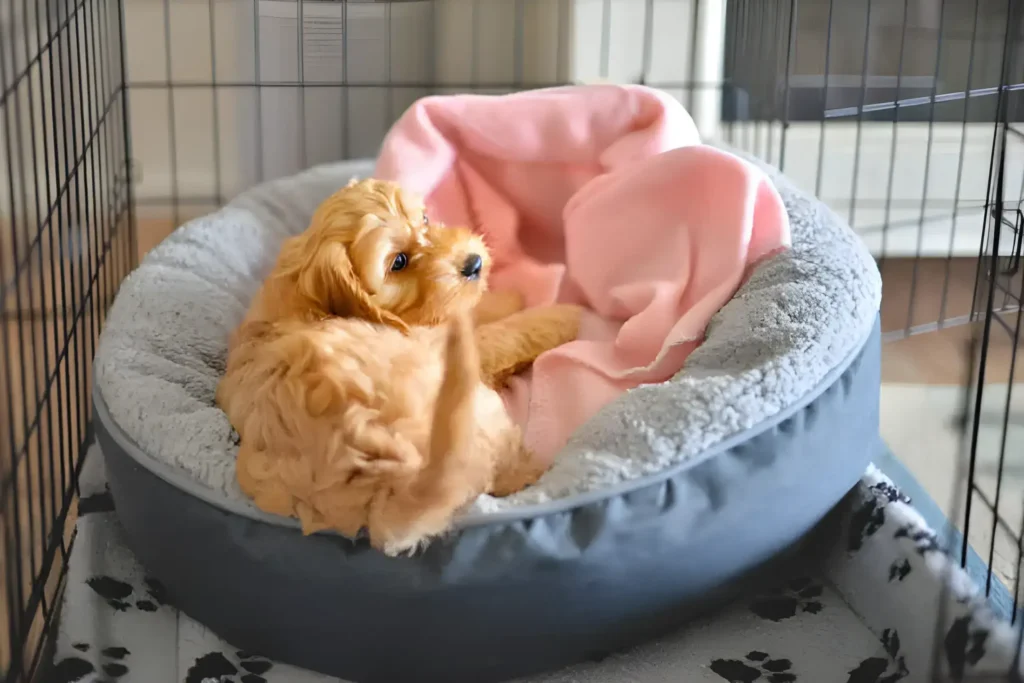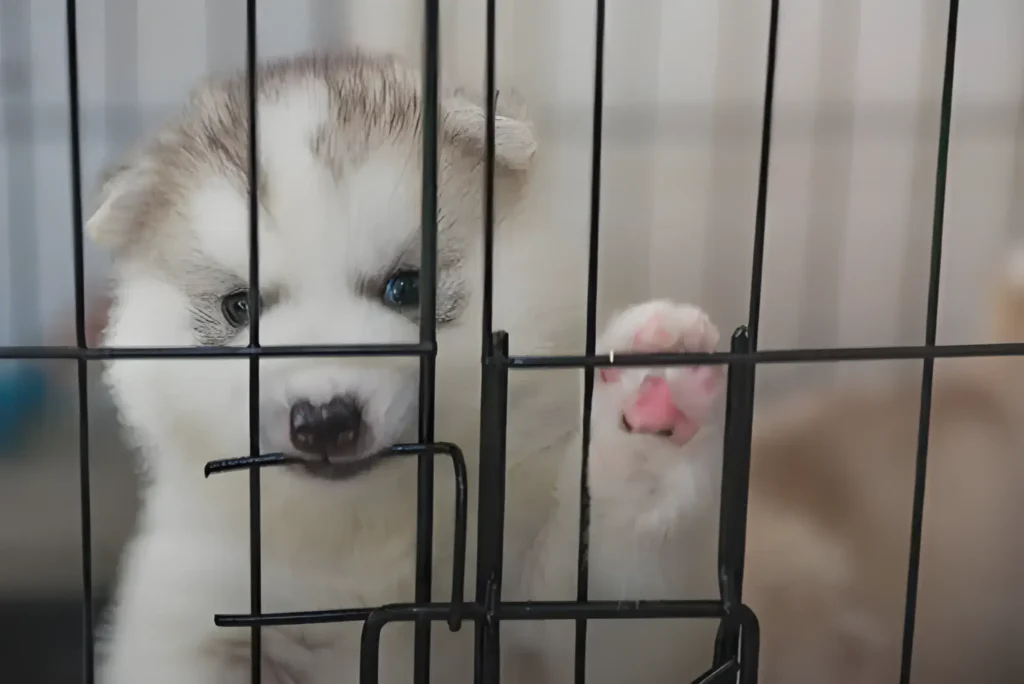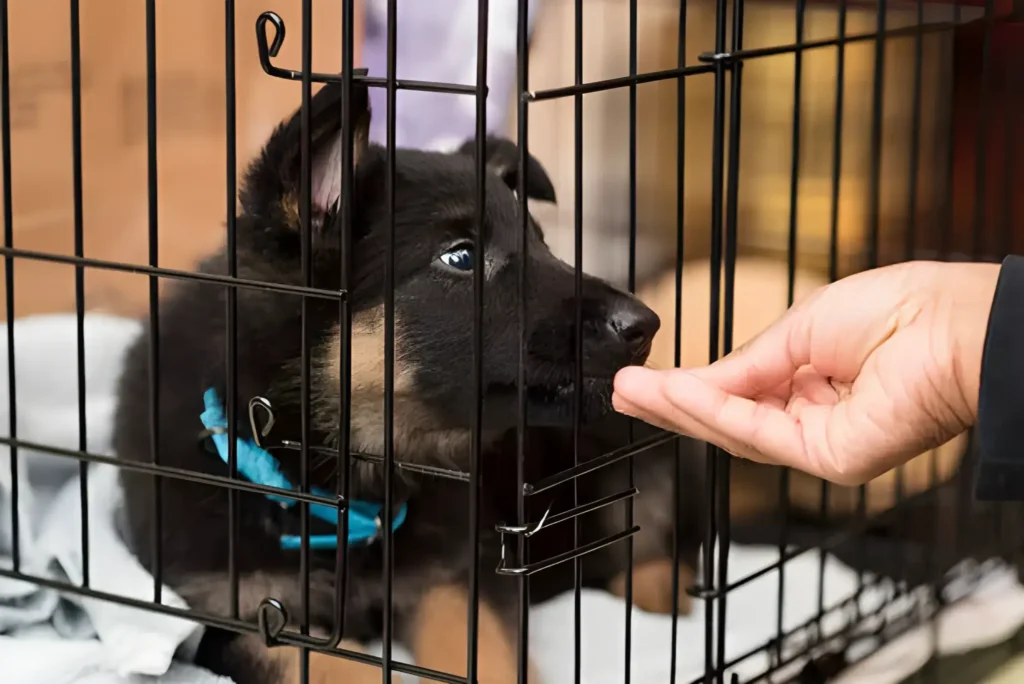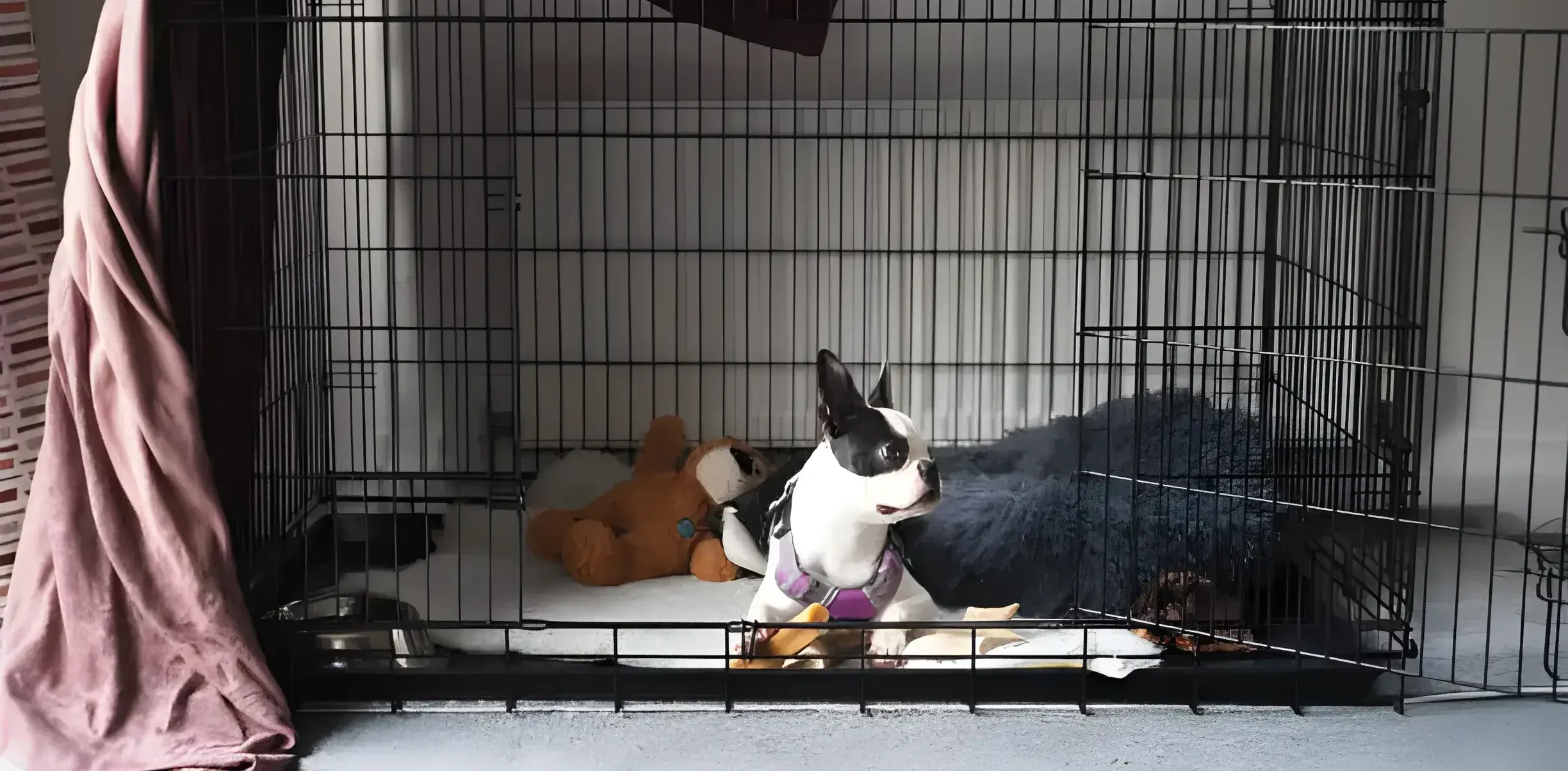Bringing home a new puppy is a thrilling experience, but those first few nights can be a mix of pure joy and mild worry. Crate training is a vital step in setting your pup up for success, offering them a safe space and promoting good habits for you both. While it might feel a little challenging at first, remember – patience and kindness will help your puppy quickly learn to view their crate as a cozy retreat.
Understanding Crate Training – Why It Matters
Crate training isn’t about confinement; it’s about creating a safe haven for your puppy. This special space becomes their den, offering a place to relax, helping prevent accidents inside the house, and promoting good habits long-term. While it takes time and consistency, crate training is a foundational aspect of raising a happy and well-adjusted dog. It leads to easier housebreaking, reduces destructive chewing, and offers a secure space for your puppy when you can’t supervise constantly.
Choosing the Perfect Crate
Size matters: Your puppy should be able to stand up, turn around, and lie down comfortably. Too big, and they might use a corner as a bathroom; too small, and it’s cramped.
Material options: Wire crates offer good visibility and airflow, while plastic crates can feel more den-like. Consider your puppy’s personality and your budget.
Second-hand success: It’s perfectly fine to find a used crate – just ensure proper cleaning and that it’s structurally sound. Check online marketplaces or local dog shelters.
Making the Crate Cozy and Inviting

Softness is key: A plush bed or blankets provide warmth and comfort. Including an old t-shirt or item with your scent can be extra comforting for your puppy.
Safe entertainment: Appropriate chew toys or Kongs filled with treats keep them occupied and reduce anxiety. Avoid anything with small parts they could choke on.
Comfort item: A soft stuffed animal or a ticking clock can mimic the warmth and sounds of littermates.
Optional den feel: Draping a light blanket over part of the crate creates a cozy cave-like atmosphere.
The Art of Positive Association
Treats, treats, treats! Toss tasty tidbits into the crate and praise your puppy as they explore on their own.
Mealtime magic: Feeding them in their crate further builds positive associations. Start with the door open, gradually closing it for short periods while they eat.
Crate time practice: Have short, fun crate sessions throughout the day, slowly increasing the time inside with the door closed. Reward calm behavior!
Patience is paramount: Never force your puppy into the crate or use it as punishment. This creates negative associations that are hard to undo.
The First Night Routine
Consistency is king: A predictable routine before bed signals to your puppy that it’s time to wind down. This includes a final potty break, a bit of calm playtime, and then into the crate.
Crate location: For the first few nights, it’s ideal to have the crate in your bedroom. Your presence is reassuring for your puppy. You can gradually transition it to its permanent location later.
Prepare for whining: It’s natural for your puppy to whine or cry initially. Calmly reassure them with your voice, but only take them out for quick potty breaks, then straight back into the crate.
Exhaust your pup: Plenty of playtime and a final potty trip right before bedtime will reduce nighttime restlessness.
Puppy Crying: What to Do (and What NOT to Do)

Resist the urge to give in: While their whimpers tug at your heart, taking them out when they cry teaches them it works. Focus on creating a positive crate experience.
Necessary potty breaks: If you suspect they genuinely need to go, take them outside quickly and efficiently, then straight back to the crate.
Soothing Support: Speak calmly to reassure them. Consider a white noise machine to mask outside sounds or a ticking clock to mimic a mother’s heartbeat.
Never punish: Scolding creates fear and distrust, hindering your progress. Crate training should build a positive association, not a negative one.
Your First Night Survival Guide
Sleep strategy: If you’re a light sleeper, plan for shifts with your partner or invest in earplugs for those first few potentially restless nights.
It’s a process: Expect some disrupted sleep at first. The goal is gradual improvement, not instant perfection.
Self-care matters: Don’t hesitate to ask for help! Have a friend or family member take your pup for a walk or handle other dog-related chores when your exhaustion hits. It takes a village!
Realistic Expectations
One-night success is rare: While some puppies adjust quickly, most will need a few nights of practice. Each night builds their confidence and comfort.
Young pups, small bladders: Very young puppies naturally need more frequent nighttime potty breaks. Adjust your expectations and consider temporarily setting up a smaller, designated space within the crate for those first few weeks.
Celebrate milestones: Did your puppy sleep quietly for a few hours? Settle into the crate without fussing? These are victories worth praising and rewarding!
Troubleshooting Common Concerns

Fearful puppy: Leave the crate door open, toss in high-value treats, and praise them for exploring. Never force them in. Go slow and celebrate every tiny success.
Crate accidents: Assess if the crate is too big, if their potty schedule needs tweaking, or if anxiety is a factor. Clean the crate thoroughly and strategize to prevent future accidents.
Busy schedule: Enlist the help of a dog walker or pet sitter for daytime potty breaks. A temporary exercise pen attached to the crate can provide a bit more room during those early days.
Beyond the First Night: Continued Crate Training
Gradually moving the crate: Once comfortable, slowly transition the crate to its intended spot, rewarding your puppy when they settle near it in the new location.
Daytime crate use: Short “crate naps” while you’re home promote relaxation and prevent the crate from feeling solely like nighttime isolation.
Crate training for older dogs: Older dogs can absolutely learn to love their crates! Focus on extra patience, slow introductions, and high-value rewards.
Owner Mindset
New puppy jitters: It’s perfectly normal to feel a touch overwhelmed those first few days and nights. Separate these natural “puppy blues” from your pup’s actual crate experience. If they can’t seem to settle with a positive approach, it’s time to reassess your methods.
The benefits of a safe space: Crate training isn’t about confinement; it’s about giving your puppy a secure den of their own. This structure aids in potty training, helps prevent destructive behaviors, and offers them a place to relax when they need a break.
Knowing when to seek support: If, despite your consistent efforts, your puppy’s crate anxiety seems extreme, don’t hesitate to reach out to a certified dog trainer or behaviorist. They can provide tailored strategies for your pup’s specific needs.
Conclusion
The first night of crate training is often the hardest, but your commitment and consistency set the stage for a crate-loving companion for years to come. Remember, kindness, patience, and a touch of sleep deprivation will take you and your pup far!
The photo featured below the post headline is Credit: CBCK-Christine/istockphoto
I hope you find this post helpful and informative. If Yes’ feel free to share it with your friends!
Frequently Asked Question
My puppy cries non-stop! Is this normal?
Yes, especially for the first few nights. If you’ve ruled out potty needs, offer comfort without removing them for playtime. Their cries will lessen with consistency.
Will crate training at night ruin potty training?
Not at all! It actually reinforces house training by teaching bladder control. Make those nighttime potty breaks quick and efficient.
Should I let my puppy sleep with me instead?
While tempting, it’s best to start crate training early. Sleeping in your bed can make the crate feel like a demotion later, hindering the process.
Should you crate your puppy the first night?
Yes! Starting crate training immediately establishes good habits and provides a safe space for your puppy. Just prepare for some potential whining and restlessness.
How long do puppies cry in a crate the first night?
This varies greatly. Some puppies settle quickly, while others may cry for extended periods. Consistency is key – offer comfort without removing them for playtime.
Is the first night with a puppy the hardest?
It often is! Expect disrupted sleep, a bit of chaos, and perhaps some “puppy blues.” But remember, this early effort lays the foundation for a smoother puppyhood.
Should I let my puppy cry it out in the crate?
Brief potty breaks are essential, but avoid taking your puppy out for play or cuddles when they whine. This teaches them that crying gets them what they want.
My puppy hates the crate – what should I do?
Make sure it’s the right size, super cozy, and that you’ve built positive associations slowly. If the aversion persists, consult a certified trainer.
Should I put a blanket over my puppy’s crate at night?
Many puppies find the den-like atmosphere comforting. Just ensure good airflow and that your puppy can’t pull the blanket in and chew on it.
Can an 8-week old puppy sleep through the night in a crate?
Most 8-week-olds can’t hold their bladder all night. Expect to take them out once or twice, but keep those breaks efficient to reinforce crate habits.
Is it okay to leave my puppy in a crate during the day?
Yes, but short periods are best, ensuring they get plenty of play, mental stimulation, and potty breaks. As they age and become reliable, crate time can be extended.
Should I comfort my puppy when they cry in the crate?
Offer brief verbal reassurance or place your hand near the crate, but avoid removing them unless you strongly suspect a need to go potty.
How do I know if I’m crate training my puppy too quickly?
Signs of excessive anxiety include frantic attempts to escape, refusing to enter the crate even for treats, or trembling. Slow down, make it ultra-positive, and consult a professional if needed.

